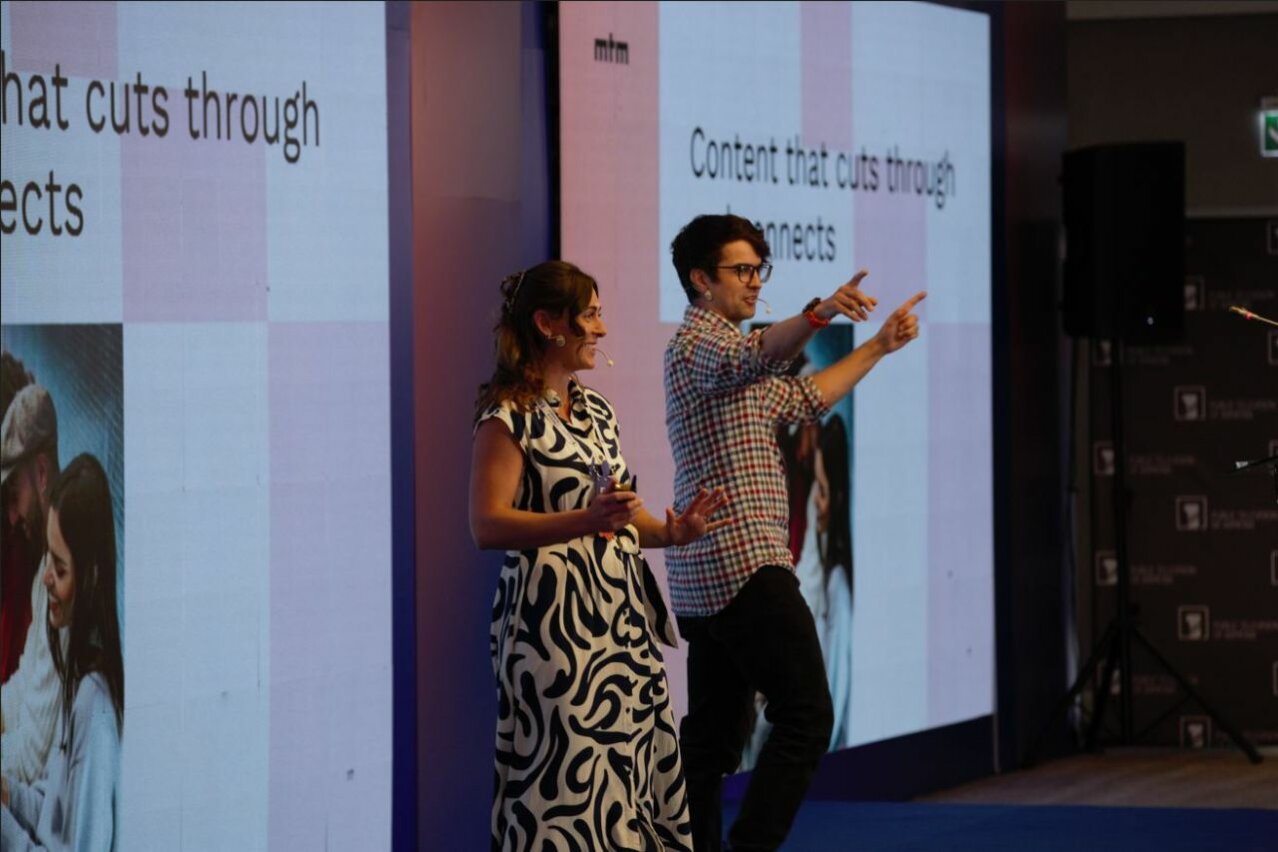In an era defined by abundance—of platforms, programmes, formats, and features—the central question for content creators, commissioners and platforms isn’t how much is out there. It’s what’s actually cutting through.
That’s the story MTM’s Rob Collier and Morgan Burgess told at the European Broadcasting Union (EBU) Media Summit in Yerevan, Armenia. Not a story of decline or nostalgia, but of evolution—one where viewers, not broadcasters, are increasingly in control, and where emotional connection is becoming the new currency of success.
But to understand what’s cutting through now, we need to start with how the landscape has fundamentally shifted.
Connected TV is changing the rules of discovery
Rob explained that connected TV is now mainstream across Europe, with penetration at around 90% in the UK, France, Germany, Spain, the Netherlands and Belgium. In the UK, it already accounts for 40% of total TV screen viewing—a figure MTM forecasts will hit 75% by 2030.
This isn’t just a device upgrade—it’s a reshaping of the entire TV experience. As Rob put it, “Discovery used to be governed by a neutral, structured grid of channels. Now it’s increasingly defined by algorithms, monetisation, and platform self-interest.”
Device manufacturers like Samsung and Amazon now promote their own content within their TV interfaces, selling prominent real estate to the highest bidder. And virtual platforms like Netflix and YouTube—what MTM defines as “device-agnostic” content gatekeepers—are strengthening their grip through scale, UX investment and relentless personalisation.
These platforms aren’t just showing content. They’re shaping what gets watched, what gets missed, and what viewers assume is popular. “Even great content can get lost if it’s not positioned right in the platform. Discovery is no longer neutral—it’s strategic,” Rob added.
From passive browsing to personal programming
Instead of being paralysed by too many choices, today’s audiences have become expert curators of their own content journeys.
Faced with a deluge of options, viewers didn’t tune out—they adapted. Armed with personalised menus, recommendation engines and an increasingly intuitive understanding of platform behaviours, they now build bespoke viewing experiences around their own interests, time, and mood.
This transition from passive browsing to active curation has redefined how content succeeds. What resonates now isn’t necessarily what’s promoted—it’s what feels right for the viewer, in that moment.
Redefining ‘quality’: it’s no longer just about production value
So what makes content rise above the noise?
To explore that, Morgan introduced findings from Why We Watch 2.0, a large-scale research series commissioned from MTM by Google, which ran across nine EMEA markets. Over 12,000 respondents were asked what “high quality content” means to them.
Unsurprisingly, most people still expect the basics—clear visuals, clean audio. But these were seen as minimum requirements, not differentiators. What truly drove perceptions of quality were emotional attributes: relevance, storytelling, authenticity, meaning.
In fact, 96% of respondents prioritised emotional or human attributes when defining high quality content. As Morgan said, “Technical excellence helps sell the story, but only if the story is worth telling in the first place.”
It’s no longer about whether the content looks polished. It’s whether it connects.
The science of connection: emotion drives impact
To dig deeper, Morgan shared results from a neuroscience study MTM conducted with Neuro-Insight, analysing how viewers respond neurologically to content—particularly creator-led video on YouTube.
Using steady-state topography (SST), researchers tracked brain activity while participants watched both curated and self-selected creator content. The findings were striking.
Creator content triggered exceptionally high emotional impact scores—especially among 18–34s. For creators perceived as relatable and authentic, emotional activation scores reached as high as 0.84—levels comparable to the most iconic, memorable ad moments, like peak Super Bowl commercials.
Crucially, emotional connection also boosted memorability. The more relatable the content, the more emotionally connected viewers felt, the more likely they were to retain the content and return to similar experiences.
Creators are reshaping expectations
The shift isn’t just about emotions—it’s about who’s delivering them.
Today’s creators aren’t just casual vloggers. They’re content brands, building trust and emotional equity over years. Their production values have caught up with traditional media—but their emotional resonance often outperforms it.
From MrBeast’s cinematic challenges to the Sidemen’s curated chaos and Soft White Underbelly’s raw interviews, creators are offering what many broadcasters struggle to deliver: consistent emotional connection.
This content doesn’t just land—it lingers. And that’s what modern audiences reward.
So, what now?
If broadcasters, platforms and commissioners want to thrive in this emotionally driven ecosystem, they need to shift their focus—from reach to resonance.
Audiences no longer passively accept what’s given. They choose. They curate. And what they return to—what they remember—is what makes them feel something real.
Morgan concluded that “Relatable content is what makes viewers feel, makes viewers connect—and makes viewers remember.”
In a world of infinite content, emotional connection isn’t just a differentiator. It’s the new foundation for lasting success.
